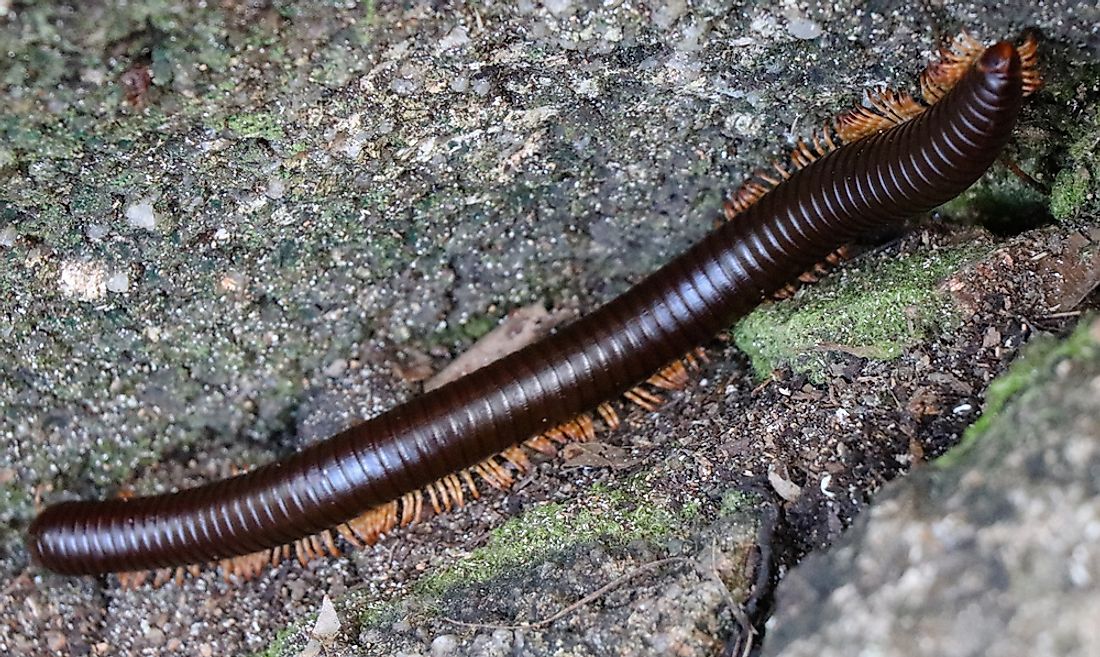Millipede Facts - Animals of the World

Millipedes belong to the group of arthropods, implying that they have pairs of jointed legs. They also have divided bodies and short heads; their different legs are their most evident element. Some uncommon species can have 750 legs, and the majority of the species have in the region of 80 and 400 legs. The name millipede is derived from the Latin word which means a thousand legs, though no known millipedes have 1000 legs. The African Goliath millipede (Archispirostreptus gigas) is one of the biggest of the millipedes, growing up to 11 inches long. Millipedes have two sets of legs connected to each part of its body. There are about 12,000 species of millipedes that have been identified, grouped into 16 orders and approximately 140 families.
Diet
Millipedes are detritivores (creatures that expend breaking down natural material and in doing so add to disintegration as well as a nutrient cycle). Most millipedes eat rotting leaves and other dead plant matter mixed with soil. They play a significant role in decomposing plant litter, and it is estimated that each species consumes between 1% and 11% of all leaf litter. The millipedes fragment the leaf litter in the gut and excrete them as pellets, bacteria, fungi, and algae, which aid in the decomposition of organic matter. Some millipedes are herbivores and feed on living plants, and occasionally some species become serious crop pests. The millipedes in the order of Polyxenida consume algae found in the bark of trees, while the Platydesmida eat fungi. There are a few species of the millipedes that are omnivores, while a few are carnivorous consuming earthworms, insects, and snails. Some species have specialized mouthparts that pierce plants and suck the plant sap.
Behavior
Having a lot of short legs makes millipedes somewhat slow-moving, their limbs and body walking in a wavelike motion. Most species are excellent burrowers, and are able to efficiently drive their direction underground head first. They can strengthen their passages by revamping the particles around it. Millipedes have a hard exoskeleton that secures them against predators. Whenever undermined, they curl up into a ball to ensure more vulnerable underside is protected. Numerous species additionally discharge toxic fluid emissions through minuscule pores at the edges of their bodies as an optional protection.
Distinction between Millipedes and Centipedes
Most people cannot differentiate between centipedes and millipedes. The two share some similarities, for instance, both belong to the group of myriapods, and share characteristics including an elongated body with segmented bodies. The two also have postanntennal organs and a single pair of antennae. Millipedes have short antennae which are elbowed and is used to probe substrate. They also have a pair versatile mandible and a single pair of maxilla which is fused into a lip. Centipedes, on the other hand, have a long antenna which appears like a thread and a small pair of mandibles. They also have a pair of large poison claws and two pairs of the maxilla.







